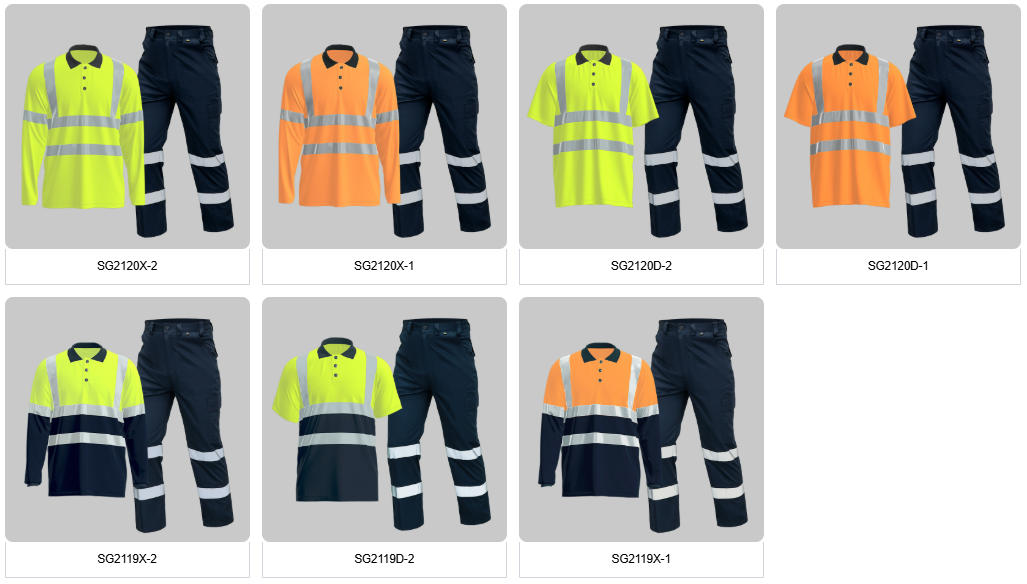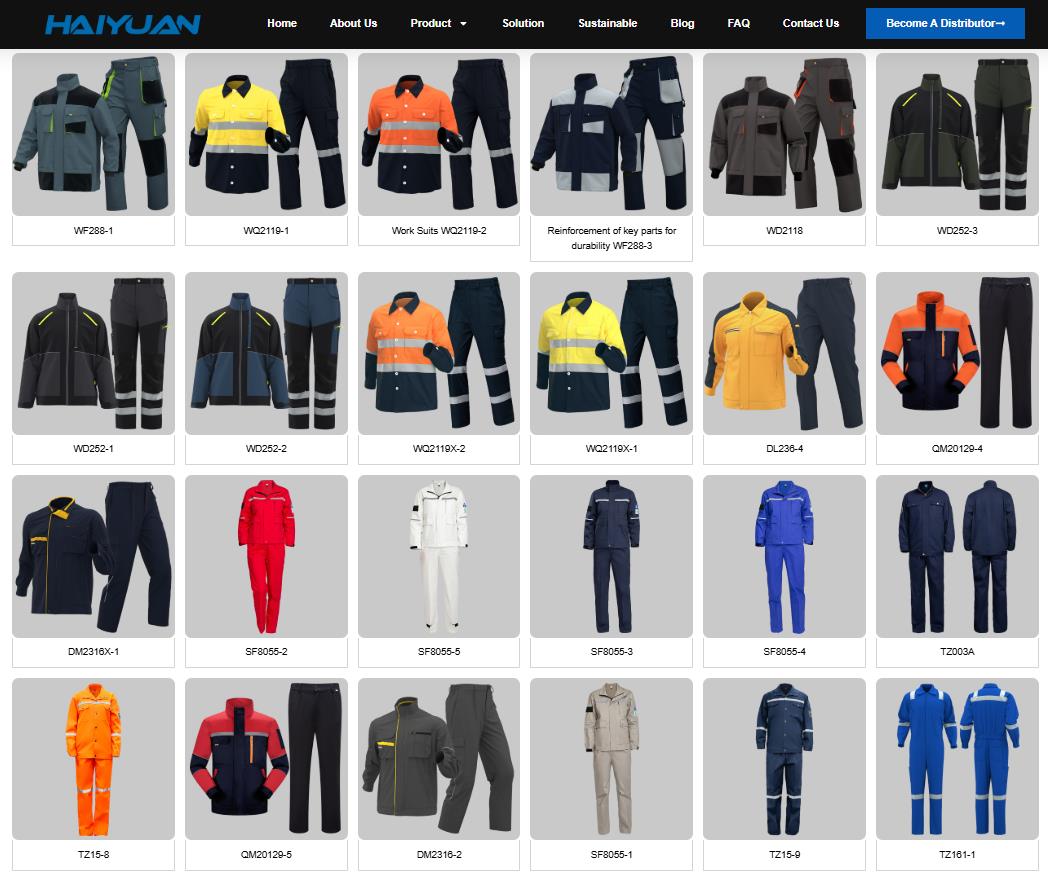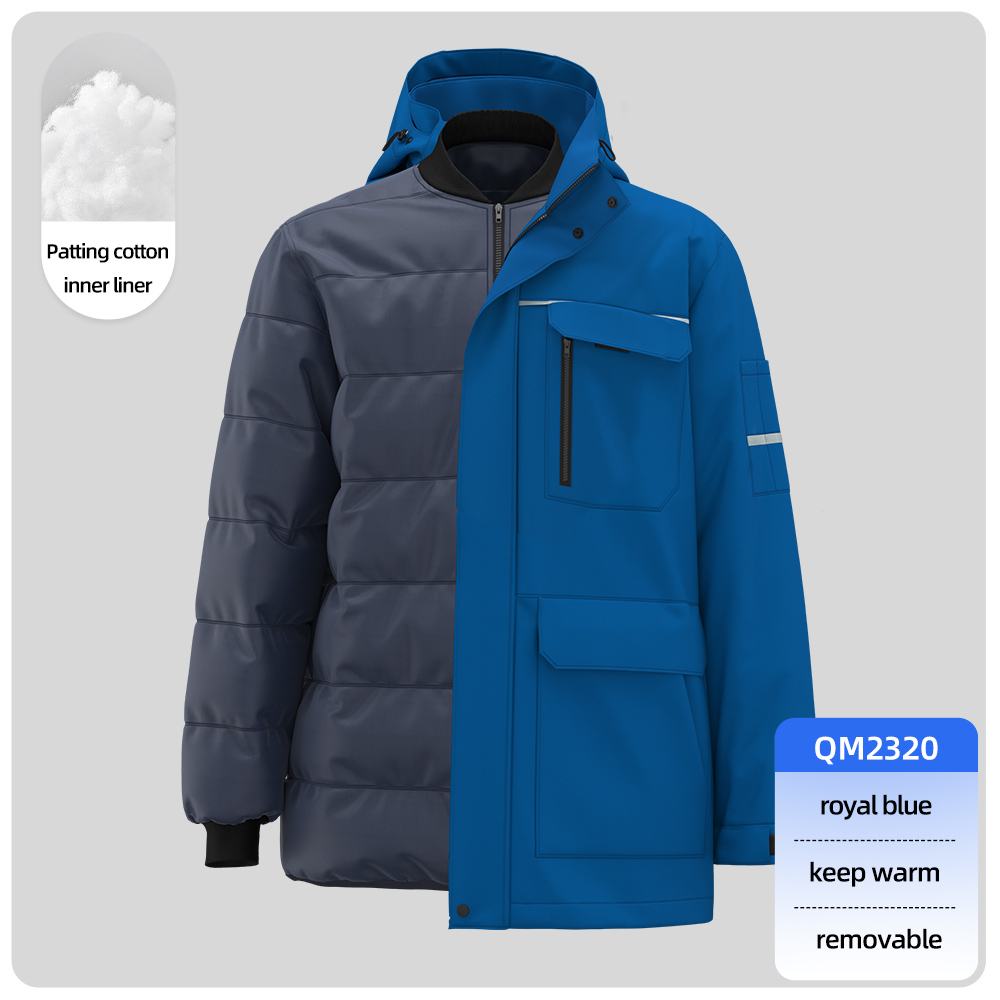This guide is designed for businesses looking to purchase branded work shirts for environments where flame resistance (FR) is not a primary requirement. This typically includes general manufacturing workshops, assembly lines, construction sites, warehouses, logistics, and outdoor work where high visibility is a key safety feature.
1. Defining Your Needs: The Core Considerations
Before contacting suppliers, define your requirements clearly:
-
Primary Use Case: Is the work done in a workshop, outdoors, or both? This determines the need for high-visibility elements.
-
Desired Fabric:
-
100% Cotton: Highly breathable, soft, and comfortable. Ideal for hot environments and physical labor. However, it can shrink, wrinkle easily, and may not be as durable as blends.
-
Poly-Cotton Blend (e.g., 65% Polyester / 35% Cotton): Offers superior durability, wrinkle resistance, and shape retention. It is stronger and more tear-resistant than pure cotton. The higher polyester content makes it easier to print on and dries faster. It’s an excellent all-round choice for most industrial settings.
-
-
Safety Compliance (High-Visibility): For outdoor work or low-light conditions (e.g., warehouses, road crews, logistics), ANSI/ISEA 107 compliant high-visibility clothing is mandatory. This standard specifies the amount of background material and reflective tape required for different classes (Class 1, 2, or 3) based on risk level.
-
Logo & Branding: Determine the logo placement (left chest, full back, sleeve), size, and colors.
2. Choosing the Right Shirt Style & Features
Select styles that balance professionalism, functionality, and comfort.
-
Short-Sleeve vs. Long-Sleeve: Short-sleeve is common for indoor workshops. Long-sleeve offers more protection from the sun, abrasion, and light debris outdoors.
-
Collar Style:
-
Traditional Point Collar: Standard for a professional look.
-
Button-Down Collar: Prevents the collar from flapping around, useful in mechanical environments.
-
-
Pockets: Utility pockets on the chest and sleeve are highly functional for tools, pens, and notepads.
-
Vents & Comfort: Features like a back yoke or underarm vents improve mobility and airflow.
-
Durability: Look for reinforced stitching, bar-tacking at stress points, and ripstop fabric options for heavy-duty applications.
3. High-Visibility (Hi-Vis) Requirements
If your workers are near traffic or in low-light areas, Hi-Vis is not optional—it’s a critical safety requirement.
-
Background Material: Fluorescent colors like Day-Glo yellow, orange, or red to be highly visible in daylight.
-
Reflective Tape: ANSI-certified reflective tape is sewn or printed onto the garment to reflect light back to its source (e.g., car headlights) in darkness.
-
ANSI Classes:
-
Class 1: Low-risk environments (e.g., parking attendants).
-
Class 2: Higher risk where workers need to be seen from a greater distance (e.g., roadway construction crews, warehouse forklift areas). This is a very common requirement.
-
Class 3: Highest level of visibility for high-risk sites and workers exposed to high-speed traffic (e.g., highway construction).
-
4. Logo Application Methods
Choose a branding method that suits your budget, volume, and desired look.
-
Screen Printing: Ideal for large orders and simple, bold designs with few colors. It’s durable and cost-effective for bulk orders.
-
Embroidery: Offers the most professional and premium look. Extremely durable and long-lasting. Best for logos without fine gradients. Perfect for polos and heavier twill shirts.
-
Heat Transfer Vinyl (HTV): Good for multi-colored complex designs and smaller orders. Modern HTV is very durable and flexible.
-
Direct-to-Garment (DTG) Printing: Like an inkjet printer for fabric. Excellent for photorealistic images and designs with many colors. Best for 100% cotton garments.
5. Finding a Wholesale Supplier: Key Steps
-
Search Terms: Use keywords like “wholesale work shirts,” “corporate apparel distributor,” “custom hi-vis shirts,” “embroidered polo shirts bulk,” and “promotional workwear.”
-
Request Quotes (RFQ): Contact several suppliers. Provide them with:
-
Desired quantity
-
Shirt style & color
-
Fabric preference (cotton or poly-cotton)
-
Hi-Vis requirements (if needed)
-
Your logo artwork
-
-
Ask Crucial Questions:
-
“What are your minimum order quantities (MOQs)?”
-
“Can you provide samples with my logo before I place a full order?”
-
“What is the production and shipping lead time?”
-
“Do you offer volume discounts?”
-
“For Hi-Vis shirts, can you provide documentation of ANSI/ISEA 107 certification?”
-
-
Review Samples: Never skip this step. Check the shirt quality, fit, and the quality of the logo application.
Summary Checklist for Your Order
-
Environment Assessed: Confirmed FR clothing is not required.
-
Fabric Chosen: Decided on 100% Cotton for comfort or Poly-Cotton for durability.
-
Safety Needs Defined: Determined if ANSI-Classified Hi-Vis shirts are needed for outdoor/low-light work.
-
Style Selected: Chosen short/long sleeve, collar type, and pocket configuration.
-
Logo Method Chosen: Selected screen printing, embroidery, or HTV based on design complexity.
-
Supplier Vetted: Received quotes, asked about MOQs and lead times, and requested samples.
-
Sample Approved: Physically inspected and approved a finished sample before full production.
By following this guide, you can efficiently source high-quality, branded work shirts that promote your company identity while ensuring the comfort and safety of your team in industrial and outdoor environments.






